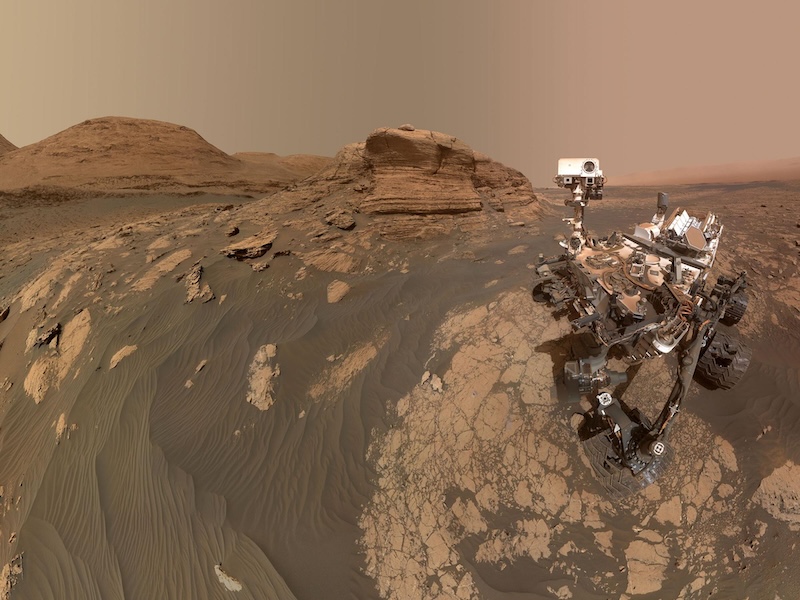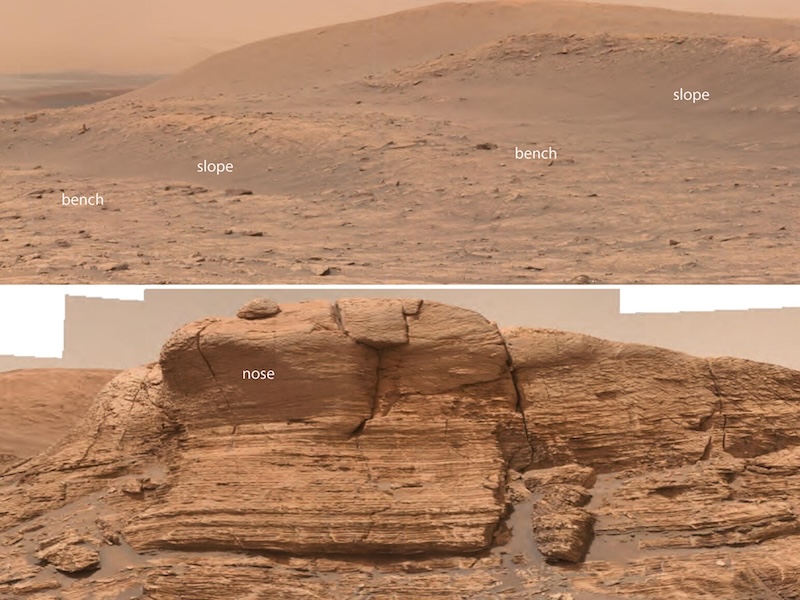
We know that Mars once had rivers and streams running across its surface. Both orbiting spacecraft and rovers on the ground have provided that evidence. On October 23, 2023, researchers at Pennsylvania State University (Penn State) announced that Mars had even more rivers than scientists previously thought. Their new findings are based on data from the Curiosity rover in Gale Crater. Interestingly, many of the rivers that created these ancient erosional landforms were in craters.
The researchers first published their peer-reviewed paper in Geophysical Research Letters on August 8, 2023.
Life-supporting rivers for Mars?
The data from Curiosity show that rivers were even more common than scientists thought. In fact, they were likely all over the planet. Benjamin Cardenas, assistant professor of geosciences at Penn State and lead author of the a paper, said:
We see signs of this all over the planet.
The 2024 lunar calendars are here! Best Christmas gifts in the universe! Check ’em out here.
Until now, the ancient remains of rivers on Mars have been fairly easy to identify. Orbiting spacecraft have identified many old riverbeds where water once flowed across the landscape, sometimes in massive floods. Scientists have also identified former rivers on Mars by erosional features called fluvial ridges. Fluvial ridges are where floodplain deposits surround accumulated river deposits. The deposits in the formerly water-filled channels gradually become taller than the surrounding terrain.
Bench-and-nose formations
The new study, however, identifies additional erosional features that have been a bit trickier to spot. These are bench-and-nose formations. Scientists commonly find them in craters. A bench is a long, narrow strip of relatively level or gently inclined land bound by distinctly steeper slopes above and below it. On Earth, benches can have various geological origins. Noses, adjacent to the benches, are short, truncated ridges. Until now, scientists had not associated bench-and-nose features with Martian rivers. The paper said:
Ancient river deposits exist across Mars and can be identified in satellite data by erosional landforms called fluvial ridges. Fluvial ridges take the shape of ancient river deposits and are useful for understanding the history of water on Mars. However, the Curiosity rover at Gale Crater, Mars, has observed river deposits that are not associated with fluvial ridges, but rather bench- and nose-like landforms that are not generally associated with ancient river deposits.
A different kind of river deposit?
The study suggests that they’re another kind of river deposit. How did the researchers determine this? They used numerical models to simulate erosional processes on Mars over billions of years. This was the first time that scientists mapped this erosion using satellite data, Curiosity images and 3D scans of stratigraphy (layers of rock called strata) on the seafloor of the Gulf of Mexico. The researchers used 25-year-old scans of Earth’s stratigraphy collected by oil companies. The comparative analysis showed that it was most likely rivers that created the similar features on Mars.
But why are the bench-and-nose erosional formations in craters? The answer is that wind is the dominant type of erosion on Mars. And craters can “steer” those winds in particular directions. As the paper explained:
We modified a computer model that generates fluvial ridges from ancient river deposits by adding a preferred direction for scarp retreat, which may exist in craters on Mars because crater topography steers winds, and winds currently drive erosion on Mars. Our model generated benches and noses rather than fluvial ridges, demonstrating that these landforms may be used as indicators of ancient river deposits in craters on Mars, similar to fluvial ridges.
Cardenas added:
We have everything to learn about Mars by better understanding how these river deposits can be interpreted stratigraphically, thinking about rocks today as layers of sediment deposited over time. This analysis is not a snapshot, but a record of change. What we see on Mars today is the remnants of an active geologic history, not some landscape frozen in time.

Many more river deposits await
Since the bench-and-nose landforms are common on Mars, and the new study links those in Gale Crater to ancient rivers, the researchers said this means rivers may have created many more such features elsewhere on Mars. As Cardenas noted:
This suggests that there could be undiscovered river deposits elsewhere on the planet, and that an even larger section of the Martian sedimentary record could have been built by rivers during a habitable period of Mars history.
So, if both the fluvial ridges and bench-and-nose formations are remnants of long-gone rivers, then Mars really was a planet of rivers eons ago. Thus, the next question is …
Could rivers on Mars support life?
If there were so many rivers, could they have supported life? Rivers on Earth play a vital role in maintaining conditions suitable for life. What about Mars? Cardenas said:
On Earth, river corridors are so important for life, chemical cycles, nutrient cycles and sediment cycles. Everything is pointing to these rivers behaving similarly on Mars.
Our research indicates that Mars could have had far more rivers than we previously believed, which certainly paints a more optimistic view of ancient life on Mars. It offers a vision of Mars where most of the planet once had the right conditions for life.
Bottom line: Researchers at Penn State just released a new study showing that rivers on Mars were once even more common than we first thought. Could they have supported life?
Read more: Evidence for ancient river on Mars in new rover images
Read more: Ancient ‘honeycomb’ mud on Mars boosts chances for life











